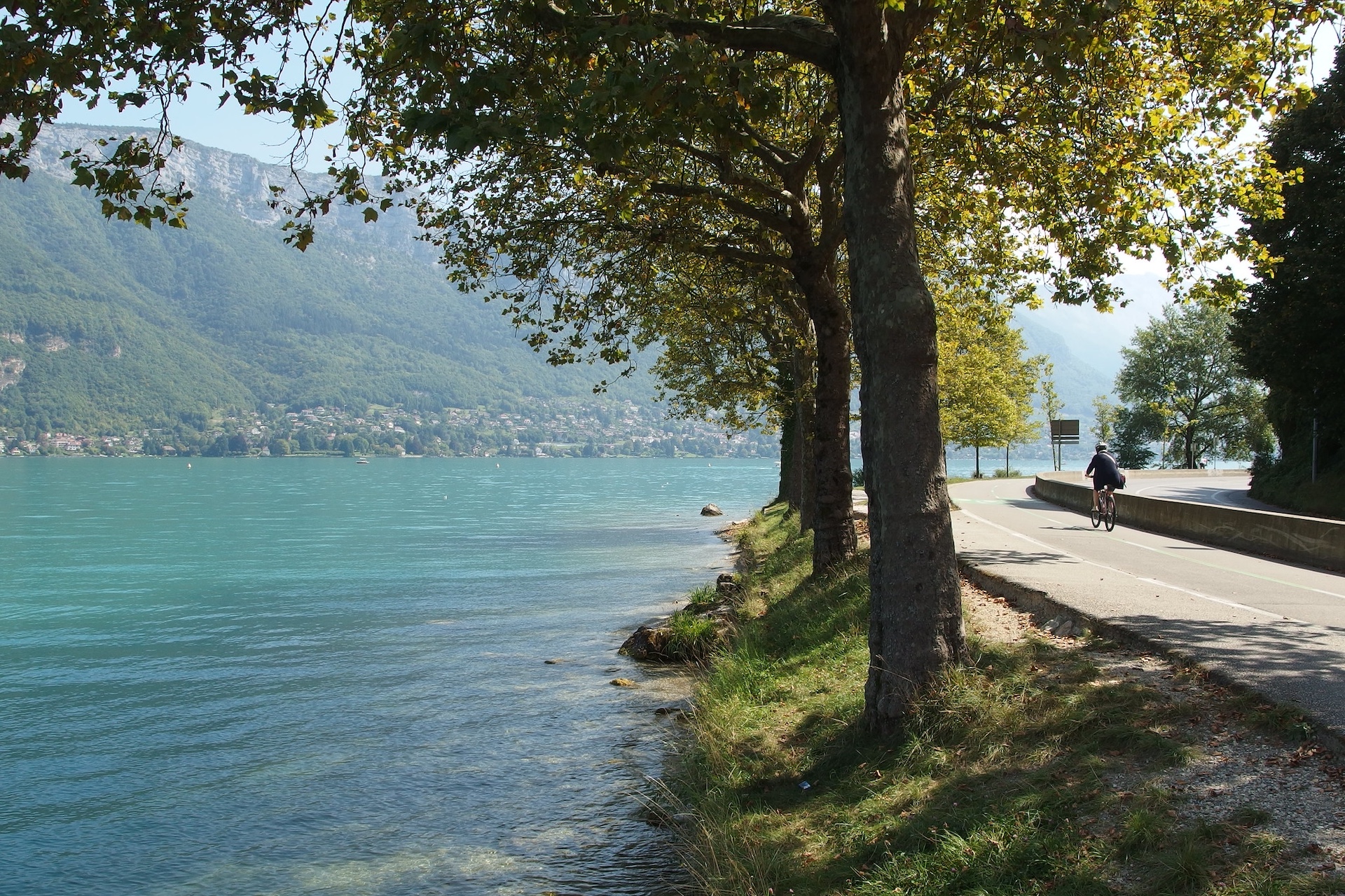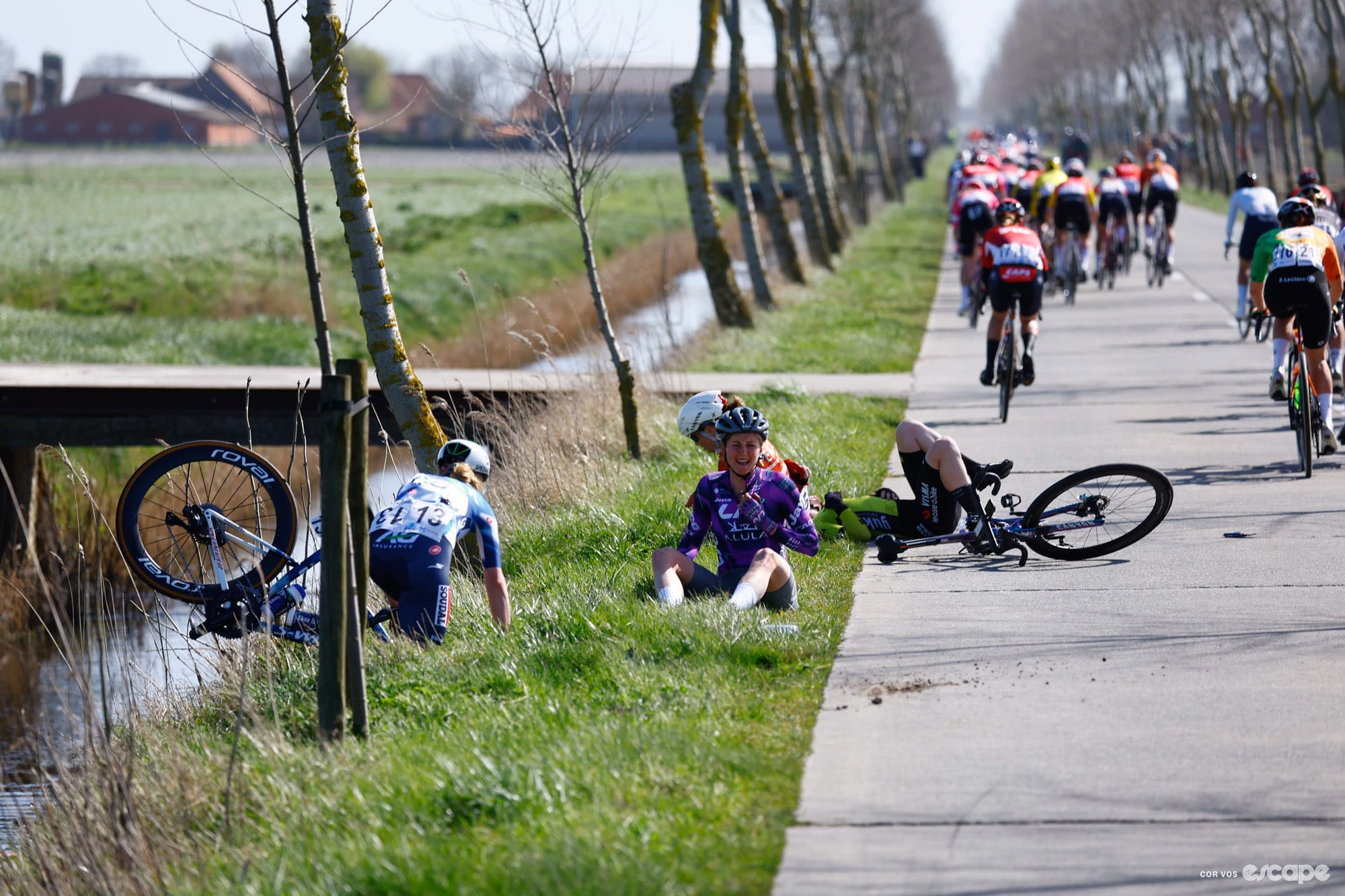It’s the penultimate stage of this year’s Tour de France Femmes avec Zwift and it’s a major mountain stage in the Alps. However, we start in the Jura, not far from the border with Switzerland. It’s home to one of my favorite cheeses. Can I tell you about cheese one more time? Pretty please?
The Jura Mountain range is home to Comté cheese. Since 1958, this cheese has had the AOP – Appellation d'Origine – quality mark. This indicates the brand is protected. Not every cheese that is similar in taste and look can call itself Comté. Before a cheese is AOP it has to follow some rules.
The milk from which the cheese is made must come from a specific breed of cows: the Montbéliarde cow. You see this variegated white-and-brown coloured breed everywhere in the region and in fact a small herd of them briefly ran alongside the riders on stage 6. The milk from these cows must be processed within 24 hours. The cows must have enough space. In summer they graze high in the mountains and mainly eat herbs and various grasses.
Traditionally Comté is produced in small cheese dairies in mountain chalets in the Jura. These are the so-called fruitières, joint workshops whose history dates back to the 13th century. The large round cheese wheels, which can weigh 40-80 kilograms, have been produced in the same way for centuries. At least 500 liters of milk are needed per cheese wheel, which required cooperation between the farmers because one farmer could never supply so much milk in one day. Teamwork makes the dream work, also in cheese.
The cheese is removed from the mold after just a few hours and remains in the cheese factory for a week to dry. After this, it goes to a maturation cellar for four to 24 months. During this period, the cheeses are regularly salted and turned.
For me the perfect Comté is a relatively young one: around six to nine months. You can buy it in every supermarket. If you don’t buy the bottom-shelf version, major supermarkets have Comté of relatively good quality.
In the final of today's stage we pass the Lac D’Annecy. It’s a scenic place that will probably generate some lovely television images. In terms of volume, it’s the second largest lake in France, after Lac du Bourget near Aix-les-Bains which is 30-odd kilometers to the west. It formed around 18,000 years ago when the glaciers melted.
In the 1950s, the lake was threatened by eutrophication which occurs when the environment becomes enriched with nutrients, increasing the amount of plant and algae growth. This was due to the influx of sewage from villages around the lake.
Some claimed this was a natural process and the price of progress but luckily the alarm was raised mainly through the efforts of Dr Paul Servettaz. Eight communities decided to take action to protect their lake. In 1957, the SILA (Syndicat intercommunal du lac d'Annecy) was created. This organization represented 113 communities with a combined population of 250,000.
In 1957, the first sewage treatment system was built, complete with catch basins, pumping station, and treatment plant. A new sewage treatment plant was commissioned in 1994. The lake now receives only rainwater and water from the streams flowing into it. The lake has now become one of the cleanest in Europe.
There is one small environmental problem though. Because of a microscopic larva called the duck flea, it’s banned to feed the ducks in the lake because the bird is host to this small larva. It’s not harmful to humans but it causes a persistent week-long itch. If you are caught feeding the ducks, you can be fined.
Did we do a good job with this story?





